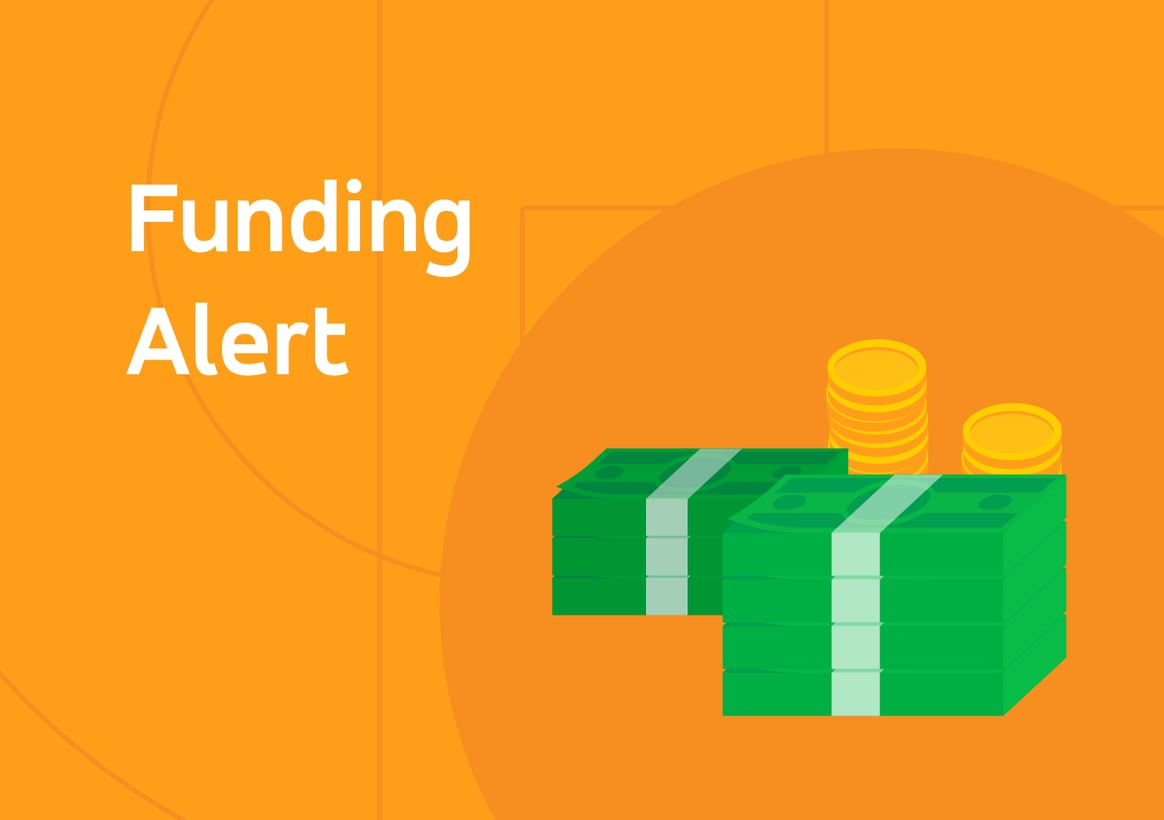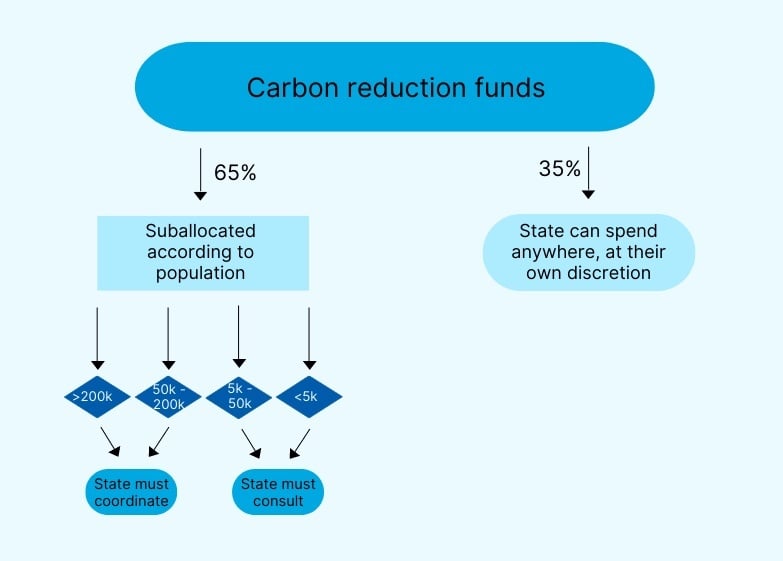Transportation is the leading cause of greenhouse gas emissions in the United States. That’s what makes the new Carbon Reduction Program one of the US Department of Transportation’s most exciting. Through this new federal program, the US DOT will distribute roughly $6.4 billion over the next five years ($1.234 billion this year) to states and metropolitan planning organizations (MPOs) to reduce carbon emissions in the transportation sector.
But with so many other new programs and notices out there, and despite some recent guidance from DOT, it’s been hard for many to understand exactly how this carbon reduction program will work, and what types of projects the money can be spent on. Read on to learn more, and get connected to useful DOT resources.
What type of projects can be funded?
There is huge variety in the types of projects that are eligible under the carbon reduction program. Virtually any project that will reduce emissions by helping users take transit, share a ride, use active transportation, or expand electrification is eligible. But here are some of the specific examples listed in the law and in DOT guidance:
- On-demand transportation service technologies such as microtransit.
- Trail facilities for walking and biking.
- Traffic monitoring or management control programs.
- Public transit projects.
- Congestion pricing or electronic toll collection efforts.
- Integration of intelligent transportation systems with the smart grid.
- Replacement of street lighting and traffic control devices with energy-efficient alternatives.
- Travel demand management strategies and programs.
- Reducing the environmental impacts of freight movement.
- Support of alternative fuel vehicles, such as through charging infrastructure or the acquisition of vehicles.
- Electrification of port facilities.
In addition, any other project not explicitly listed in the guidance may be considered eligible at DOT’s discretion, as long as it provides demonstrable reductions in carbon emissions and does not expand roadway capacity. The DOT will cover 80% of costs for eligible projects, with very few limited exceptions.
How will the money be distributed?
This year’s $1.234 billion is available now, though its distribution scheme is complex. First, the money is broken down between the 50 states: according to this DOT table, it ranges from $123 million for Texas to $5.2 million for Delaware.
Each state can spend 35% of its funding where and how it pleases, within the rules of the program. For the other 65%, each state is required to suballocate funds to areas that the law breaks down into four categories: (1) urban areas over 200,000 people; (2) urban areas between 50,000-200,000; (3) areas with 5,000-50,000; and (4) areas under 5,000.
For those first two categories — the larger urban areas — DOT has specified the amounts suballocated with a table for over 200,000 population and another table for between 50,000-200,000 population.
Confused yet? Let’s use Minnesota as an example. Overall, the State is getting just over $20 million this year. The state has total discretion over how to spend $7 million (35%) of that amount as long as it ultimately goes to one of the allowable uses: they could run a statewide competition for projects, they could distribute it to one designated project, they could use it for some other statewide priority.
The remaining $13 million (65%) must be suballocated, and for larger areas those amounts are set: the Minneapolis/St. Paul area will get $6.67 million; St. Cloud, $278K; Rochester, $271K; Duluth, $234K; Mankato, $145K; Fargo, $107K; Grand Forks, $21K; and La Crosse, $13K. Of the remaining $5.3 million, $1.6 million will go to areas with a population between 5,000 and 50,000 people, and $4 million will go to areas with a population less than 5,000 (i.e., all other areas).
Who decides how this money is spent?
For the 35% that the state DOTs fully control, they decide how the money will be spent. For the 65% in suballocated amounts, the money still flows through the state DOTs and will be distributed through them. In urbanized areas over 50,000 people, the state DOT must “coordinate” with the relevant MPO; in other suballocated areas, the state DOT must “consult” with the MPO.
What this consultation means in practice is somewhat uncertain. Congress wrote the program in a way that would give MPOs more discretion and authority over these funds than other programs such as CMAQ, perhaps to give regional entities a stronger hand in how to reduce emissions with federal funds. However, DOT’s present guidance is unclear on whether it will treat this program differently than older programs in which the hand of MPOs vis-a-vis state DOTs has been weaker. We imagine the exact nature of how State DOTs and MPOs implement this program together in states will vary quite a bit from state to state.
How can we pursue this funding for our projects?
While a lot of details about the Carbon Reduction Program are still being hammered out, this funding should be available for distribution now. We recommend reaching out to your MPO and/or state DOT contacts immediately to ask how they plan to distribute their Carbon Reduction funds and if your project may be included.
If you’re interested in using Carbon Reduction funds for on-demand transit projects, improved paratransit, road pricing pilots, or any other form of innovative mobility, please reach out to partnerships@ridewithvia.com. We are already partnering with cities and agencies across the world on such projects and would love to help you make your case for Carbon Reduction funding.
See more alerts here and click the button below to receive our newsletter, with new funding alerts included every month.





%206.png?width=71&height=47&name=The%20Buzz%20Blog%20Hero%20(1750%20x%201200%20px)%206.png)